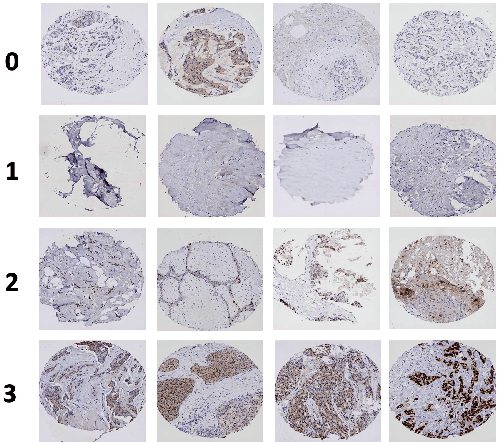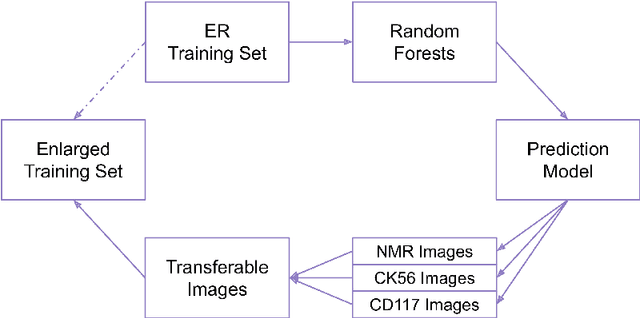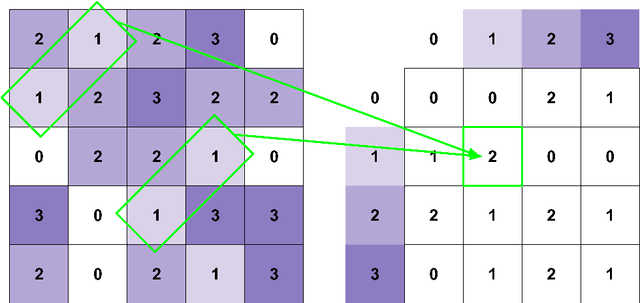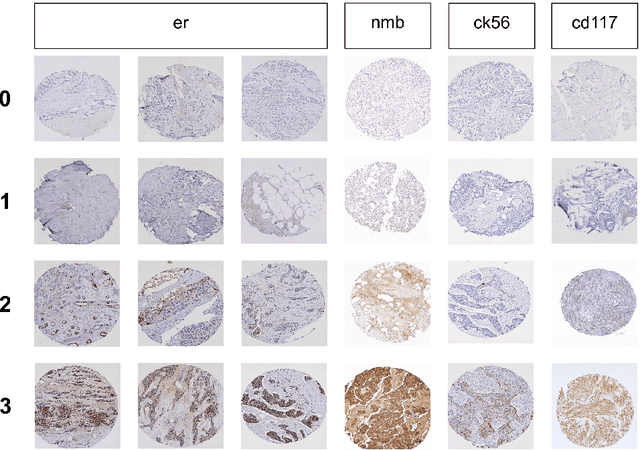Automatically Score Tissue Images Like a Pathologist by Transfer Learning
Paper and Code
Sep 09, 2022



Cancer is the second leading cause of death in the world. Diagnosing cancer early on can save many lives. Pathologists have to look at tissue microarray (TMA) images manually to identify tumors, which can be time-consuming, inconsistent and subjective. Existing algorithms that automatically detect tumors have either not achieved the accuracy level of a pathologist or require substantial human involvements. A major challenge is that TMA images with different shapes, sizes, and locations can have the same score. Learning staining patterns in TMA images requires a huge number of images, which are severely limited due to privacy concerns and regulations in medical organizations. TMA images from different cancer types may have common characteristics that could provide valuable information, but using them directly harms the accuracy. Transfer learning is adopted to increase the training sample size by extracting knowledge from tissue images from different cancer types. Transfer learning has made it possible for the algorithm to break the critical accuracy barrier. The proposed algorithm reports an accuracy of 75.9% on breast cancer TMA images from the Stanford Tissue Microarray Database, achieving the 75% accuracy level of pathologists. This will allow pathologists to confidently use automatic algorithms to assist them in recognizing tumors consistently with a higher accuracy in real time.
 Add to Chrome
Add to Chrome Add to Firefox
Add to Firefox Add to Edge
Add to Edge